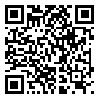BibTeX | RIS | EndNote | Medlars | ProCite | Reference Manager | RefWorks
Send citation to:
URL: http://jbrms.medilam.ac.ir/article-1-822-en.html
Introduction:: The proliferation of the COVID-19 virus has become a significant global public health concern. Iran was among the countries severely affected by this virus, facing considerable challenges in managing and treating COVID-19 infections. To implement more efficient care and prevention strategies, it is critical to understand the progression of the illness and the mortality rate of those affected. This study focuses on analyzing the mortality trends of COVID-19 patients in Iran. The primary aim is to apply statistical models to characterize and predict fatalities caused by COVID-19 in Iran.
Material & Methods : Data on COVID-19-related deaths in Iran were analyzed, encompassing the daily number of new cases and the cumulative number of cases reported between February 19, 2020, and May 15, 2022. The data were divided into six periods to develop more accurate models. Ten time series and regression models were fitted to the data, with the best model for each variable in each period identified using the coefficient of determination (R²) index. The significance of the models was assessed using the F-test.
Results:Throughout the study period, the ARIMA (4,1,4) model and the cubic regression model were the time series models that best fit the mortality data. The cubic model provided the best fit during the first, second, third, fourth, and fifth periods, while the quadratic model was the best fit during the sixth period. For the cumulative death data, the cubic model was the most accurate.
Conclusion: The study's findings demonstrate that time series and regression statistical models can effectively model and forecast COVID-19 mortality data on both a daily and cumulative basis.
Received: 2024/02/7 | Accepted: 2024/06/12 | Published: 2024/06/21
| Rights and permissions | |
 |
This work is licensed under a Creative Commons Attribution-NonCommercial 4.0 International License. |





